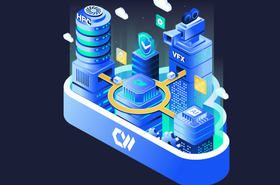The growth of Generative AI within organizations, and into more mainstream use, is a testament to its transformative power. But while we’ve seen just how revolutionary Gen AI can be – providing data-driven decision-making, streamlining business processes, and offering organizations a competitive edge – not all organizations are aware of potential negative impacts or are prepared to ensure responsible integration.
Our most recent research exploring Gen AI tool usage within organizations revealed that 89 percent consider GenAI tools to be a potential security risk, while only 38 percent are approaching their use with caution.
As global interest continues to grow, this article will provide an overview of the evolving trends, outline ethical dilemmas around data and provide the best practices for usage to responsibly scale AI strategies.
Popularity is growing
While previous waves of automation technology have played an integral role in physical activities for most businesses, such as an e-commerce business focused on large volumes of packages, with automated sorting machines, conveyor systems, and robotic pickers, Gen AI now impacts most organizations with its activities surrounding decision making and collaboration.
As a result, our research found a major uptick in usage. 95 percent of organizations told us they are using GenAI tools in some guise within their businesses, and a further 92 percent expect interest in using Gen AI tools to only continue to increase by the end of the year.
Amongst industries that are driving its adoption, the manufacturing industry stood out, offering a compelling glimpse into the rapid advancements that are being made during the industry 4.0 era. Other verticals that stood out for their usage include finance, technology, and services.
Specific to the tools themselves, ChatGPT, Drift, and LivePerson came through as the most popular GenAI-powered applications, while OpenAI.com topped the list of AI/ML-related domains. Interestingly, over half of OpenAI.com transactions can be attributed to ChatGPT-related traffic.
The ethical implications impacting organizations
In the rush to innovate and remain competitive, many organizations aren’t thinking broadly enough about AI’s potential implications.
GenAI models utilize datasets to draw and provide conclusions, the larger these sets, the more accurately they can operate. However, it’s not as simple as that, with many issues around privacy, bias and inequality.
Regulation is key in preventing GenAI models from delivering inferior or biased conclusions but is sometimes hard to manage at a global scale when different countries follow different laws. The area of intellectual property (IP) is a good example where Western markets tend to stick to IP laws while Eastern markets don’t, meaning that Eastern markets can innovate far quicker than their Western counterparts. It is not just other companies that could take advantage of this inequality of data use – cybercriminals are not going to stick to ethical AI usage and observing privacy laws when it comes to their attacks, leaving those who do effectively battling with one arm tied behind their backs.
How companies can start taking charge of their GenAI approach
Having an understanding that such AI applications come with an inherent risk and must be continually assessed to keep intellectual property, personal data, and customer information secure, is the first step towards gaining control and mapping out long-term AI approaches.
However, in order to take action, it is crucial that organizations establish a set of best practices to ensure the responsible and secure use of these tools.
Tempting as it might be, maintaining a strict segregation between public and private data, whilst prioritizing the use of private data as much as possible may be of use in preventing security consequences that may result in unauthorized access to identity theft, or even the misuse of sensitive information.
Prioritizing existing regulations and maintaining a proactive attitude to ensure all relevant laws and ethical standards are observed is a critical step in the responsible development, integration, and use of Gen AI. This will mean considering how often to reapply your AI processing engine and factoring this into plans and budgets.
Importantly, from employees to board-level executives, transparency is vital, especially in terms of understanding the relevancy and purpose of these tools. This can ultimately aid the process of identifying and managing potential risks associated with AI systems in the future, allowing stakeholders to proactively address concerns and vulnerabilities, reducing the likelihood of negative consequences.
The importance of now
With Gen AI adoption continuing to gain popularity as we move into 2024, it’s time for organizations to understand the current implications so they can better safeguard their business.
It will be essential to address ethical concerns, protect privacy, maintain security, comply with regulations, and foster trust among users and stakeholders to avoid consequences that extend beyond legal and regulatory issues and overall business success.
By prioritizing safety, organizations contribute to the responsible development and deployment of AI technologies.





